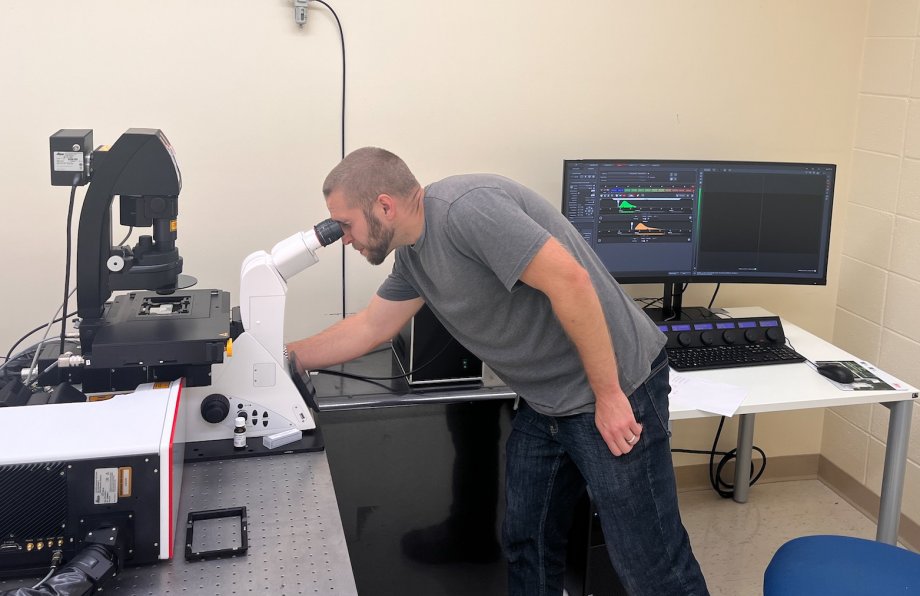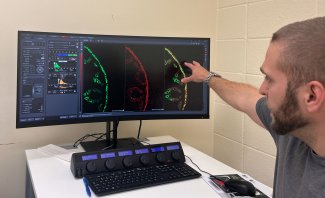
A new confocal microscope in South Dakota State University's Functional Genomics Core Facility (FGCF) expands both the research capacity and opportunities within the lab, said Ryan Hanson, assistant professor in the Department of Biology and Microbiology and coordinator of the FGCF.
The Leica Stellaris 5 Confocal Microscope is the newest piece of cutting-edge technology for researchers on SDSU's campus. Located in room 313 of the Avera Health and Science Center, the microscope features five laser-lines, three spectral-based detectors, whole slide navigation, and Leica's Lightning deconvolution software—setting a new standard for both image quality and the depth of information obtained from a single slide.
"The new microscope greatly improves the image acquisition capabilities over the existing instrument, enabling researchers to collect more data in less time" Hanson said. "It will also have environmental control so researchers will be able to image cells for extended periods to understand how biological networks function over time."
Since arriving on campus earlier this summer, the microscope has been used by researchers in following departments: chemistry and biochemistry, biology and microbiology, animal science, dairy science, plant science and pharmacy.
"This instrument has a lot of applications in a variety of research fields," Hanson said. "It greatly expands the opportunities that the FGCF provides to campus.”

The FGCF, a core research facility on SDSU's main campus, facilitates interdisciplinary gene function research and training in viral, bacterial, plant and animal systems. The primary FGCF suite is in the Edgar S. McFadden Biostress Laboratory and has three rooms containing various equipment necessary for studying the function of genes—among other fields of study. A nominal user fee is charged for usage of the equipment to support maintenance of the equipment.
"We can study the entire central dogma of biology, from DNA to RNA to proteins," Hanson said. "Basically, the equipment we have down there can essentially interrogate any of these processes."
This equipment includes a QuantStudio6 RT-PCR system for interrogating gene expression and Licor Odyssey Fc gel imaging system for western blot analysis. Other available equipment includes the Olympus IX70 Inverted Compound Microscope, the Olympus FV1200 Scanning Confocal Microscope and the Olympus Bx53 Upright Microscope—among other instruments.
The FGCF is accessible 24/7 to any registered user on campus. Those interested in registering can reach out to Hanson or Liping Gu, who operates the FGCF on a day-to-day basis, for more information. Further descriptions of equipment and information on how to become a user.
- Contact:
- Telephone number: 605-688-6161
Republishing
You may republish SDSU News Center articles for free, online or in print. Questions? Contact us at sdsu.news@sdstate.edu or 605-688-6161.

